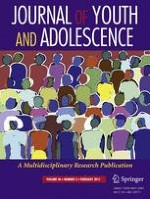22-04-2016 | Empirical Research
Paternal Monitoring: The Relationship Between Online and In-Person Solicitation and Youth Outcomes
Gepubliceerd in: Journal of Youth and Adolescence | Uitgave 2/2017
Log in om toegang te krijgenAbstract
Despite extensive literature on parental monitoring, few studies have focused on father-youth solicitation in particular and none on solicitation via communication technology. To address this gap, this study explored the relationships between fathers’ online and in-person solicitation of their adolescent and emerging adult children, and the youth’s internalizing, externalizing, and prosocial behaviors. A sample of US fathers (N = 158) reported on solicitation patterns, use of technology, and their child’s behaviors. The results revealed differences by demographics, and an inverse trend between online and in-person solicitation in relation to internalizing, externalizing, and prosocial behaviors. Regression analyses revealed that online solicitation of information from the youth’s friends was related to greater internalizing and externalizing, and less prosocial behavior. These findings support research suggesting that some forms of online solicitation may be interpreted by adolescents and emerging adults as intrusive and a violation of privacy.
